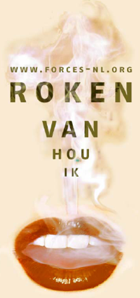Research Project Two (Complete and Published)
THE ASSOCIATION BETWEEN TEN MODIFIABLE RISK FACTORS AND HEALTH CARE EXPENDITURES – A medical economics study using the HERO database, that addresses two questions:
• Do those at high risk have greater health care costs than those at lower risk? If so, what is the amount over time? What is the most expensive, what is number two, number three, and so on?
• Do those with specific risk factor combinations have greater medical expenditures than those without these risks? If so, what is the amount over time?
This research project is complete, peer-reviewed and published in the October 1998 issue of the JOURNAL of OCCUPATIONAL and ENVIRONMENTAL MEDICINE, (Goetzel, Anderson, Whitmer, et.al., JOEM, (40) (10). October 1998; 1-12). It was funded by a consortium of 22 HERO sustaining partners. Research design involves a retrospective, two-stage, multi-variate analysis, including logistic and linear regression models. This permits the examination of specific risk factors as independent variables, thus eliminating the impact of other risks. In addition to adjusting for specific risk factors, other confounding factors adjusted for were: gender, age, educational level, race, type of job, employer and number of months employees were followed after the first HRA was completed. Ten risk factors were evaluated, six self-reported and four biometric. The self-reported were: physical activity, alcohol consumption, nutrition, tobacco use, stress and depression. The biometric measurements were: cholesterol, blood pressure, blood glucose and weight.
Using the HERO database, research inclusion criteria were: active employees age 18 to 64 at the time of the first HRA and those who could be followed for at least six months after the completion of the first HRA. Based on this, there were 46,026 study subjects, all of whom completed a common HRA and were enrolled in fee-for-service health care plans. They were followed for up to three years after the completion of the first HRA.
It was found that those with self-reported, persistent depression (n=997, 2.2% of the study sample) had adjusted annual health care expenditures 70% greater than those who reported not being depressed. Number two was uncontrolled stress (n=8,641, 18%). These individuals had annual adjusted medical costs 46% greater than those who were not stressed. The third most costly risk was high blood glucose (n=2,271, 5%), with adjusted medical expenses 35% greater than those with normal blood glucose. The other most costly risks in descending adjusted order were: obesity (+21%), tobacco use (former +20%, current +15%), high blood pressure (+12%), and poor exercise habits (+10%). There was a dichotomy between the adjusted and unadjusted data relative to high cholesterol levels (n=8,641, 18%). Based on unadjusted data, health care costs were 17% greater than those with normal cholesterol levels, however, when adjusted, health care costs were 0.8% lower. Those at high risk for health problems due to excessive alcohol consumption (n=1,723, 4%) had adjusted health care expenditures 3% lower than those at lower risk. This is not unexpected, as those with drinking problems often avoid the health care system. In the case of nutrition, those who reported poor nutritional habits (n=9,278, 20%) had adjusted health care expenditures 9% lower than those who reported good nutritional habits. This finding was perplexing, because it is in contrary to the body of published nutrition research. It may be explained by the fact that the impact of all other risks usually associated with poor nutrition (obesity, hypertension, high cholesterol, high blood glucose) have been eliminated through the adjustment process.
The finding that psychosocial risks were the most costly was unexpected and medically newsworthy. This study suggests that sufficient attention should be directed toward worksite depression and stress screening along with the opportunity for adequate diagnosis and treatment.


